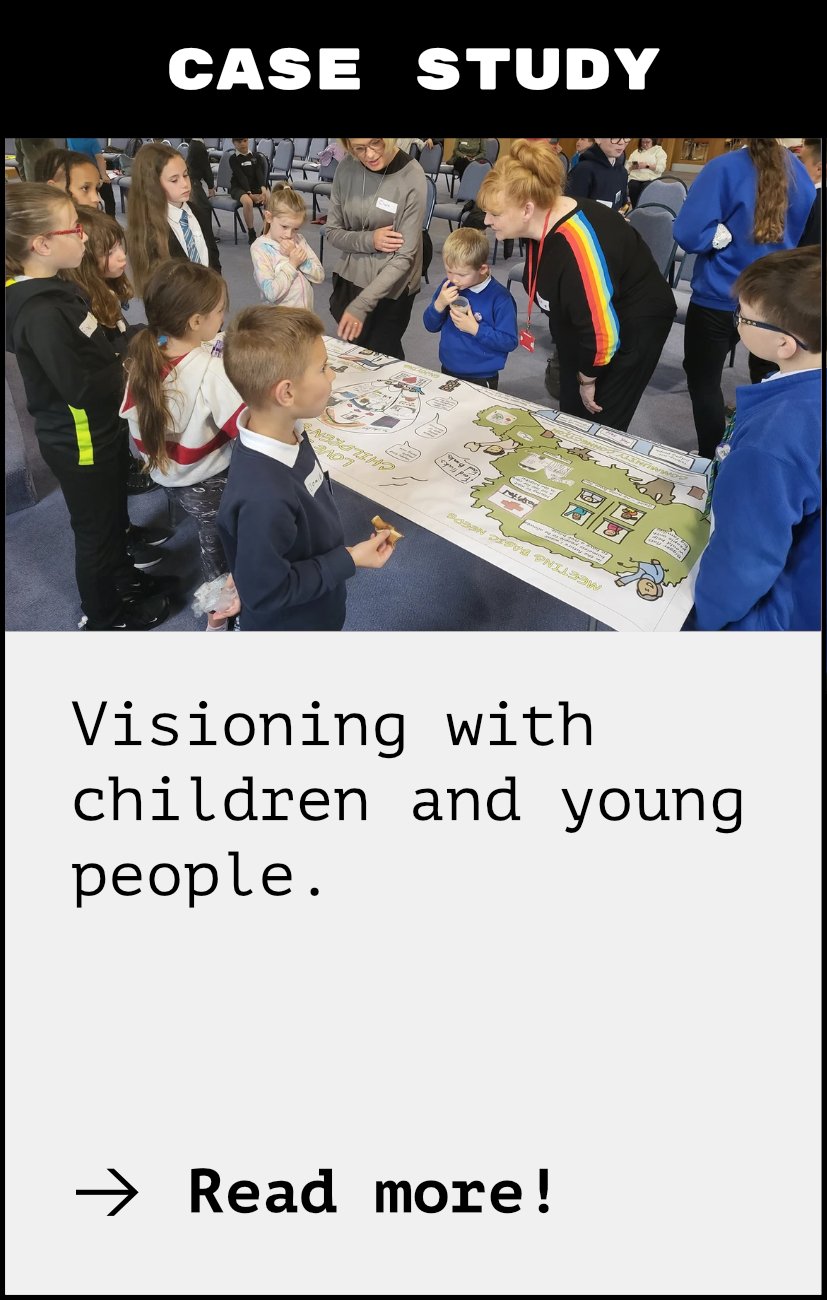Different formats
Once the wellbeing vision and required ways of working have been defined, there are different formats to express and communicate the vision, for example, through:
a vision statement for the future
graphic harvesting, whereby the inputs from participants are synthesised and translated into a visual in real-time
a short video explaining your vision, including the voices of those involved in shaping it
When developing materials to communicate the wellbeing vision, make sure to regularly check back with workshop participants to ensure that the ways in which their inputs have been worded and visualised resonate with what they were trying to say.
Keep in mind that the vision is not set in stone, but rather the starting point of an evolving process. Over time, new inputs and events are likely to further shape the wellbeing vision going forward. Some governments have even built regular review cycles into legislation. For example, in Scotland, the Community Empowerment Act 2015 requires that the Scottish National Performance Framework is reviewed every five years through a public consultation process.
Case studies
Vision statements can be communicated in a range of different formats, including a written report as well as shorter visual forms, which can help to make the vision more accessible and easier to communicate. Have a look at how the wellbeing visions were communicated for the different case study examples we saw before in Section 5.7:



